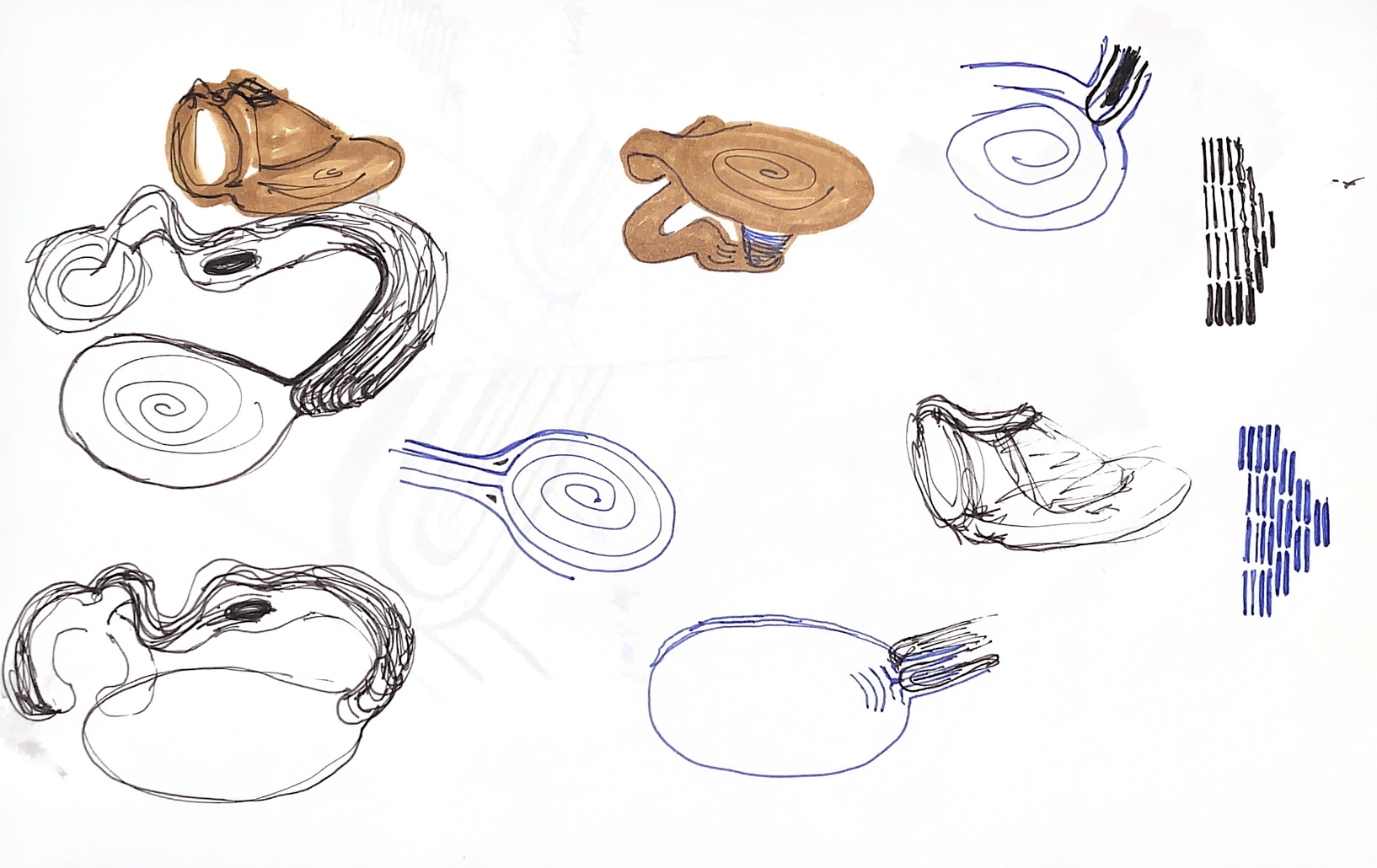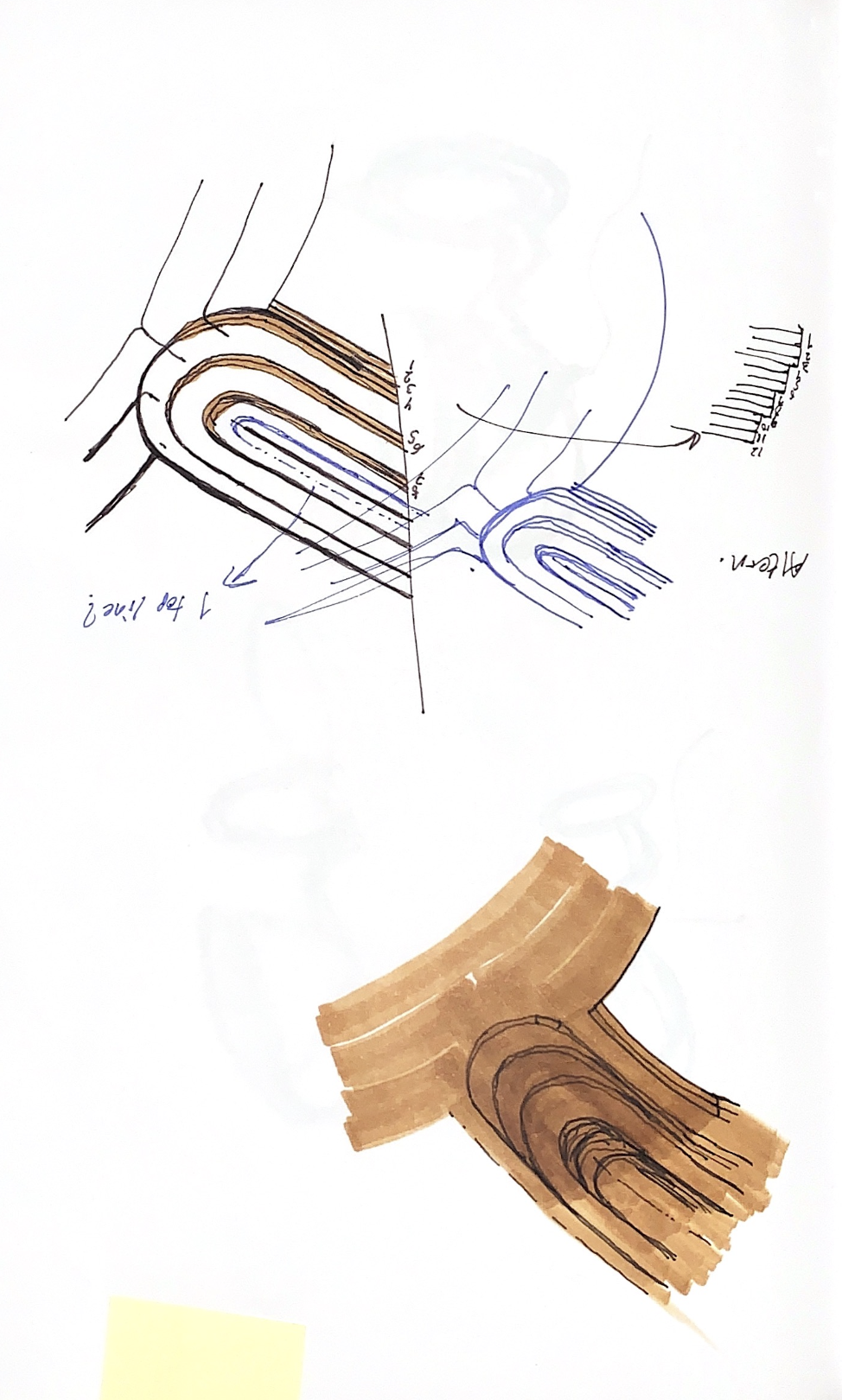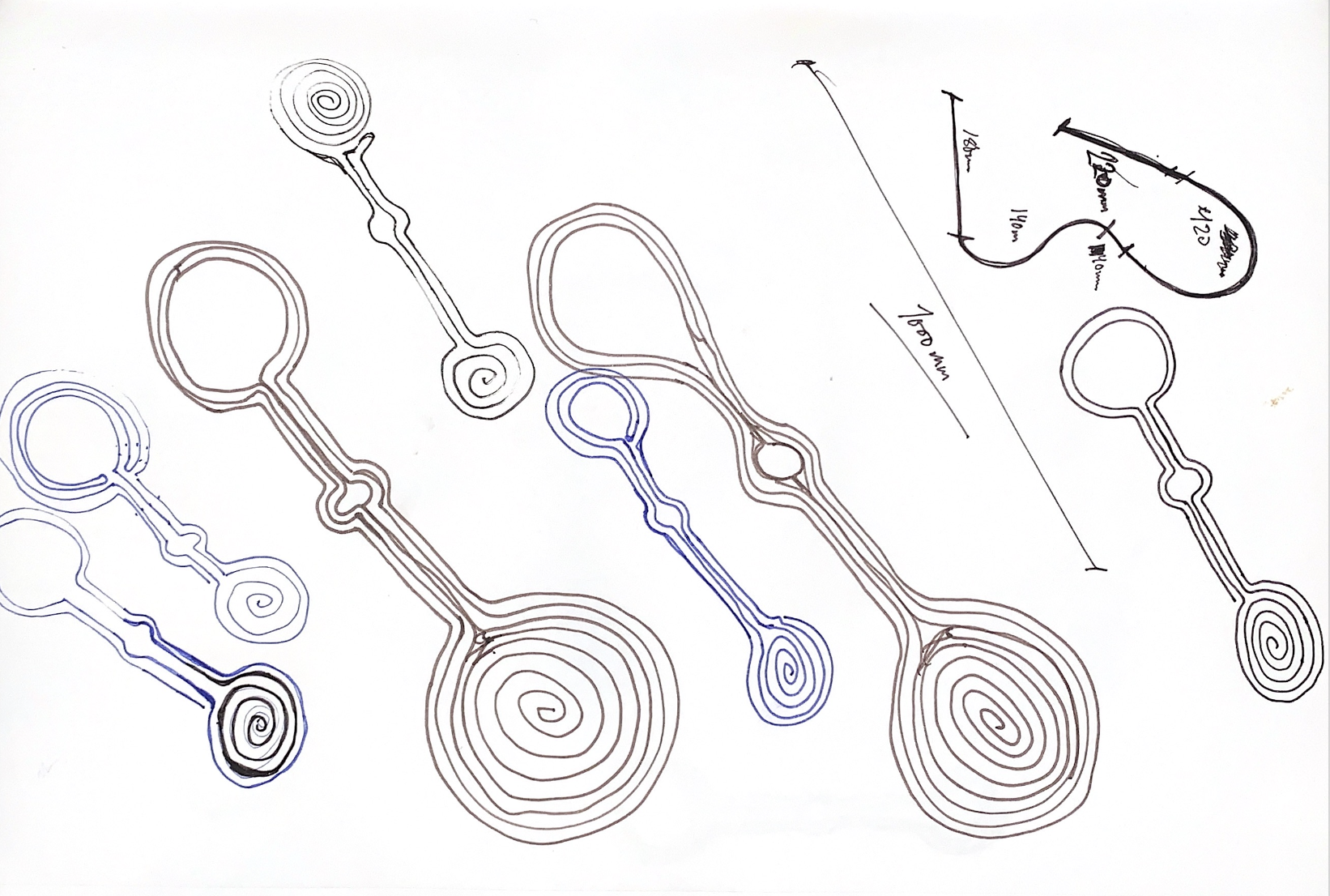
Designing with lines
Date
Dec, 2024
Location
Rotterdam, Netherlands
Designing with lines involves drawing paths that connect points in space. These paths guide the robot's motion as it deposits material in a continuous flow. By building up layers of material, we form shapes that would be challenging to achieve or wasteful to produce using traditional subtractive methods.

By adjusting the distance between layers, we can control the amount of material deposited at any given point. This allows for variations in layer height and thickness, similar to the weight of a drawn line. Structural elements can be emphasized by increasing material density where strength is needed, while thinner sections can be created where less material is required. This controlled variation can serve various purposes, such as joinery solutions, flexible areas, and overall balance.

Working with thicker lines challenges us to rethink traditional approaches to connections and functionality. The line width inherently limits the level of detail, encouraging cleaner and more logical solutions. This built-in constraint steers us toward simplicity rather than unnecessary complexity. Beyond the form itself, we focus on material quality, selecting biopolymers, fillers, and pigments that complement this honest approach to design.



